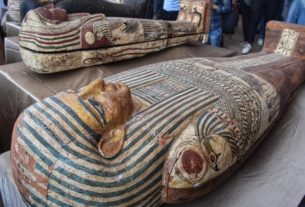To help monitor fishing activities in the southern seas, researchers have relied on albatrosses. And it works.
Over 800 million people worldwide depend on fishing for their livelihood. Unfortunately, these resources are increasingly threatened by illegal activities. Indeed, it is estimated today that illegal, unreported and unregulated (IUU) fishing accounts for 12 to 28% of world catches. In addition to posing a threat to food security, these activities also promote the destruction of ecosystems.
To help combat these practices, researchers mainly use satellites. However, this type of monitoring can be expensive. It is also impossible to follow all the boats because of the intermittences of overflights. Based on this observation, researchers from the CNRS and the University of La Rochelle decided to rely on another alternative: albatrosses.
These birds, whose wingspan can reach 3.50 m, can indeed travel great distances. In addition, they are naturally attracted to fishing boats which they can follow for hours.
A third of boats illegally fish
For this study, the researchers equipped 169 albatrosses from the Crozet, Kerguelen and Amsterdam islands, with small beacons weighing 70 g and detecting echoes emitted by radars from fishing vessels at 5 km. All the birds were then released to the southern Indian Ocean and followed for six months.
At the end of this project called “Ocean Sentinel“, the albatrosses had managed to locate 353 fishing boats in the region.
Of those operating in Exclusive Economic Zones (EEZs) of countries where vessels must report their catches, 25.8% had turned off their “automatic identification systems” used to avoid collisions and allow authorities to track them. In international waters this time, birds discovered that 36.9% of the ships had shut down the system. However, for researchers, this type of behavior most often reflects illegal activities.
Albatrosses supporting satellites
For Henri Weimerskirch, the main player in this project, this study is a real success and could ultimately support satellite surveillance. “We have shown that it is possible,” he said. As these birds are capable of transmitting data in real time, they could even be used in law enforcement efforts in collaboration with marine authorities.
John Amos of SkyTruth in West Virginia, which uses satellites for environmental protection, welcomed the initiative. However, he also points out that advances in satellite surveillance could allow us to do without albatrosses. “We will soon no longer have to rely on wild animals to do our data collection work,” he said. “Orbital technologies are improving rapidly and regularly catch illegal fishermen in their nets.”




